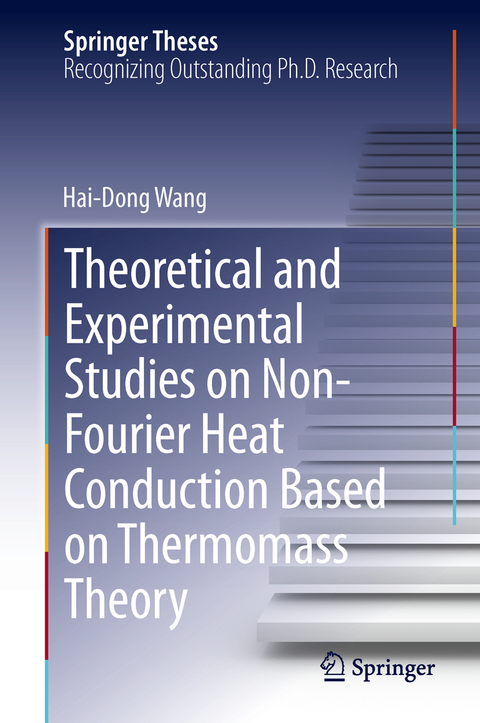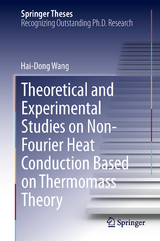Theoretical and Experimental Studies on Non-Fourier Heat Conduction Based on Thermomass Theory
Seiten
2014
|
2014
Springer Berlin (Verlag)
978-3-642-53976-3 (ISBN)
Springer Berlin (Verlag)
978-3-642-53976-3 (ISBN)
Widely recognized as an outstanding contribution to the literature, work on the novel thermomass theory capable of quantitatively predicting energy transport in nanomaterials, covers non-Fourier behaviors and includes fresh data on metallic nanofilms.
This book mainly focuses on the theoretical and experimental study of non-Fourier heat conduction behavior. A novel thermomass theory is used as the theoretical basis, which provides a general heat conduction equation for the accurate prediction of non-Fourier heat conduction. In order to prove the validity of this thermomass theory, a large current was used to heat the metallic nanofilm at the minimum temperature of 3 K. The measured average temperature of the nanofilm was notably higher than the prediction of Fourier's heat diffusion equation, while matching well with the general heat conduction equation. This is the first time that steady non-Fourier heat conduction has been observed. Moreover, this book concerns the role of electron-phonon interaction in metallic nanofilms, which involves the breakdown of the Wiedemann-Franz law at low temperatures and interfacial thermal resistance at femtosecond timescales. Readers will find useful information on non-Fourier heat conduction and the latest advances in the study of charge and heat transport in metallic nanofilms.
This book mainly focuses on the theoretical and experimental study of non-Fourier heat conduction behavior. A novel thermomass theory is used as the theoretical basis, which provides a general heat conduction equation for the accurate prediction of non-Fourier heat conduction. In order to prove the validity of this thermomass theory, a large current was used to heat the metallic nanofilm at the minimum temperature of 3 K. The measured average temperature of the nanofilm was notably higher than the prediction of Fourier's heat diffusion equation, while matching well with the general heat conduction equation. This is the first time that steady non-Fourier heat conduction has been observed. Moreover, this book concerns the role of electron-phonon interaction in metallic nanofilms, which involves the breakdown of the Wiedemann-Franz law at low temperatures and interfacial thermal resistance at femtosecond timescales. Readers will find useful information on non-Fourier heat conduction and the latest advances in the study of charge and heat transport in metallic nanofilms.
Hai-Dong Wang received his Ph.D. degree in Power Engineering and Engineering Thermophysics from Tsinghua University, China in 2012. Currently he works as a post-doctor at the Institute of Engineering Thermophysics, School of Aerospace, Tsinghua University, China.
Introduction.- Thermomass theory for non-Fourier heat conduction.- Experimental investigation of thermal wave and temperature wave.- Experimental proof of steady-state non-Fourier heat conduction.- Conclusions.
| Erscheint lt. Verlag | 18.2.2014 |
|---|---|
| Reihe/Serie | Springer Theses |
| Zusatzinfo | XIV, 112 p. 93 illus., 25 illus. in color. |
| Verlagsort | Berlin |
| Sprache | englisch |
| Maße | 155 x 235 mm |
| Gewicht | 362 g |
| Themenwelt | Naturwissenschaften ► Physik / Astronomie ► Thermodynamik |
| Schlagworte | Femtosecond laser • Metallic Nanofilms • Non-Fourier Heat Conduction • Thermal Resistance • Thermomass Theory • Wiedemann-Franz Law |
| ISBN-10 | 3-642-53976-9 / 3642539769 |
| ISBN-13 | 978-3-642-53976-3 / 9783642539763 |
| Zustand | Neuware |
| Haben Sie eine Frage zum Produkt? |
Mehr entdecken
aus dem Bereich
aus dem Bereich
Hauptsätze, Prozesse, Wärmeübertragung
Buch | Softcover (2023)
De Gruyter Oldenbourg (Verlag)
CHF 62,90




